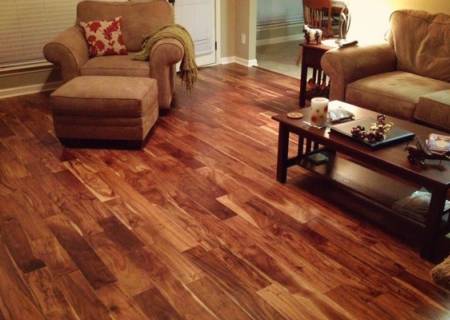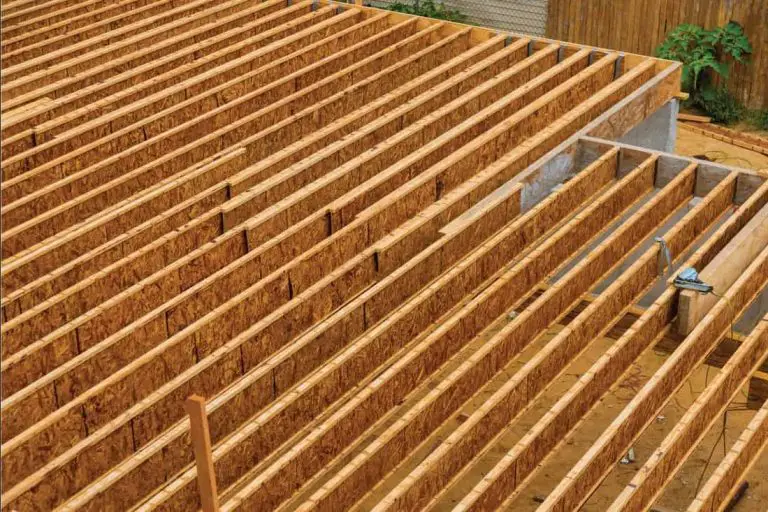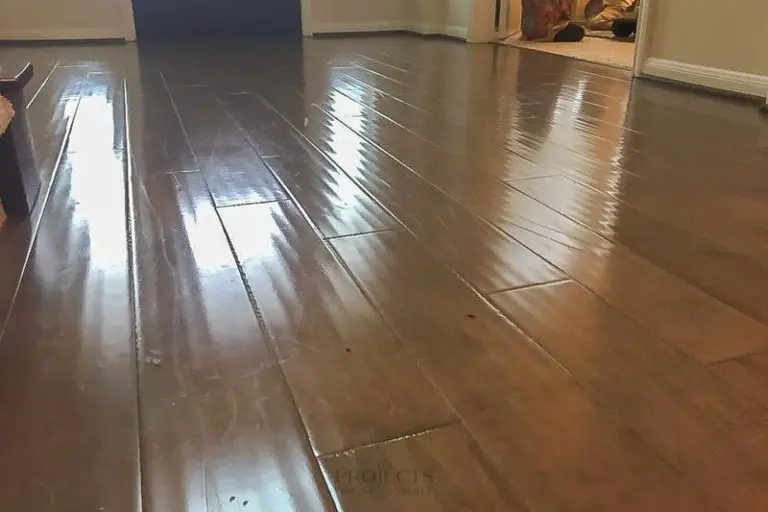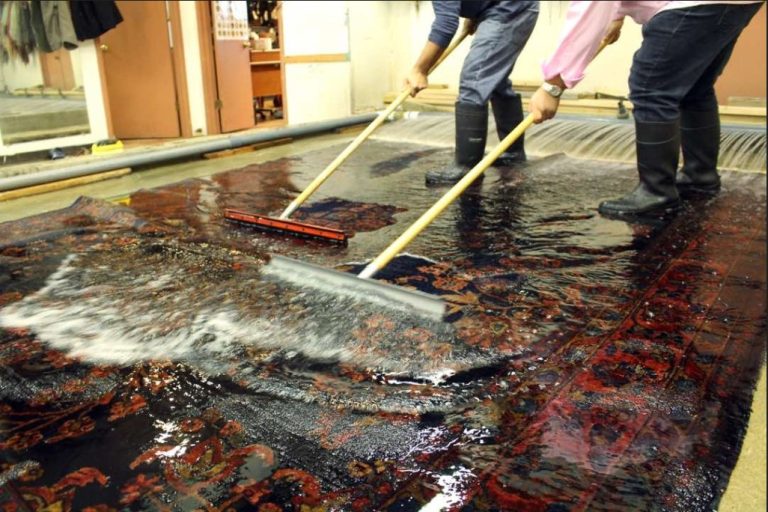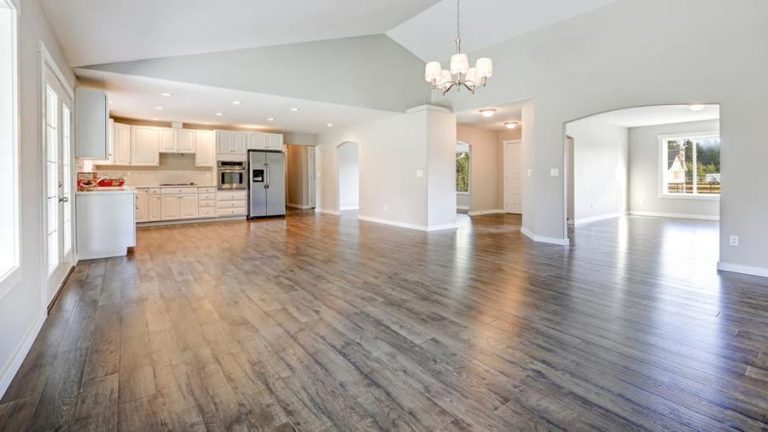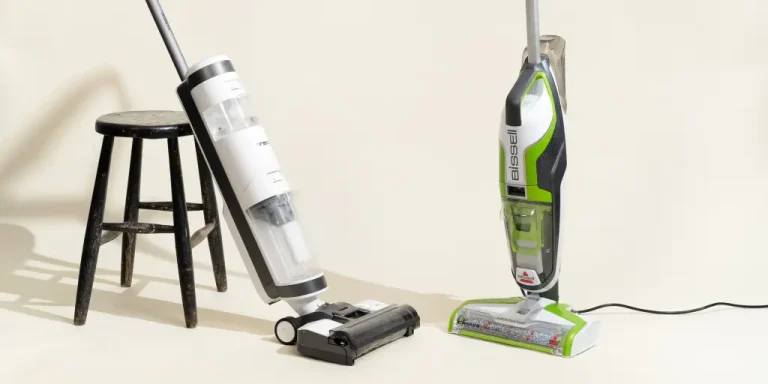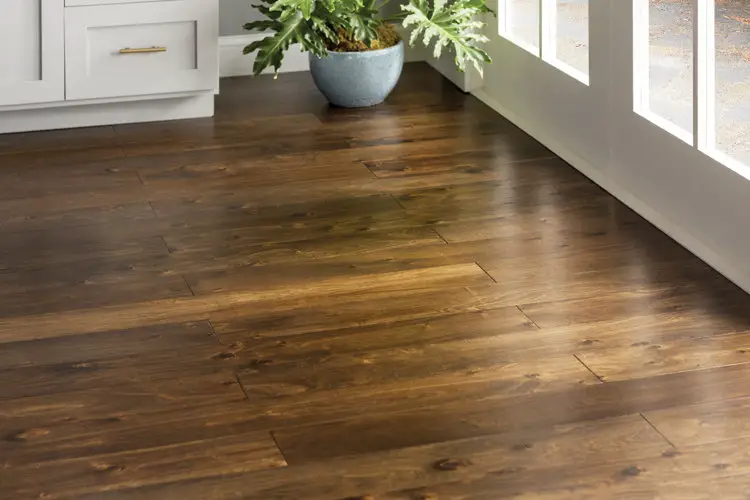How to Clean Acacia Wood Floors
Cleaning and maintaining acacia wood floors can be a challenge for even the most experienced home cleaner. Acacia wood is one of the most popular materials used in flooring because it looks great, is very durable, and is relatively inexpensive. Unfortunately, cleaning this type of flooring requires special care to ensure that you don’t damage its unique grain pattern or cause discoloration from harsh chemicals.
With a few simple steps and some gentle products, however, you can keep your acacia wood floors looking their best for years to come! Start by sweeping away any dirt or debris with a soft-bristled broom or vacuum cleaner designed specifically for hardwood floors. If there are stubborn spots that won’t come up by just sweeping them up, use an appropriate damp mop such as microfiber cloths that have been lightly sprayed with water mixed with a mild detergent solution.
Use gentle strokes when mopping so you don’t scratch the surface of the flooring; let it air dry after each cleaning session before walking on it again or applying additional cleaners or conditioners.
- Step 1: Vacuum the floor – Before beginning any cleaning process, it is important to remove dirt and debris from the surface of the acacia wood floor
- Use a vacuum cleaner with a soft brush attachment to gently clean away dust and dirt particles
- Step 2: Mop with water – Fill a bucket with warm water and use a mop or rag to lightly dampen the surface of your acacia wood floor
- Avoid using too much water as this can cause damage to the wood over time
- Step 3: Create cleaning solution – Create a cleaning solution by combining one cup of white vinegar, one-gallon warm water, and two tablespoons of mild detergent in another bucket
- Mix well until all ingredients are fully blended together
- Step 4: Cleaning – Dip your mop into your prepared cleaning solution then wring out excess moisture before applying it across your acacia wood floors in small sections at a time
- Make sure that you do not saturate your floors as this can cause warping over time if left wet for an extended period of time
- Step 5 : Rinse & Dry – After completing each section rinse off any remaining soap residue on surfaces with clean fresh water before drying thoroughly with towels or cloths
Disadvantages of Acacia Wood Flooring
If you’re considering installing Acacia wood flooring in your home, it’s important to be aware of the potential drawbacks before making a final decision. While this type of hardwood flooring can add beauty and value to any space, there are some key disadvantages that should be considered. One disadvantage is that Acacia wood tends to scratch easily.
This makes it difficult for homeowners who want their floors to remain looking like new for years on end. The softness of the wood means not only will scratches occur more often but they may also be deeper than with other types of harder woods. It’s therefore important to take extra care when moving furniture around or walking on these floors with pets and small children who might have sharp objects in their pockets or shoes with heels, as these could cause significant damage over time if left unchecked.
In addition, Acacia wood flooring can absorb moisture quickly which increases the risk of warping over time due to changes in humidity levels within the home environment. Warped boards can lead to gaps between them which affect overall aesthetic appeal as well as create safety hazards by trapping dirt and debris underneath them that could trip up unsuspecting people walking across them barefoot or in socks! To prevent this from happening it’s essential that all spills are mopped up immediately and regular cleaning is done using appropriate products designed specifically for hardwood flooring maintenance purposes.
Finally, Acacia wood is known for its high price tag when compared with other types such as pine or oak so those on a budget may wish to consider an alternative material instead unless money isn’t an issue at all! That said, however – investing in quality materials now does guarantee superior lasting results down the line so make sure you weigh up pros versus cons carefully before making any decisions here too! Overall then while Acacia Wood Flooring certainly has its advantages – such as being aesthetically pleasing and adding value – there are some definite disadvantages too worth bearing in mind before committing financially speaking!
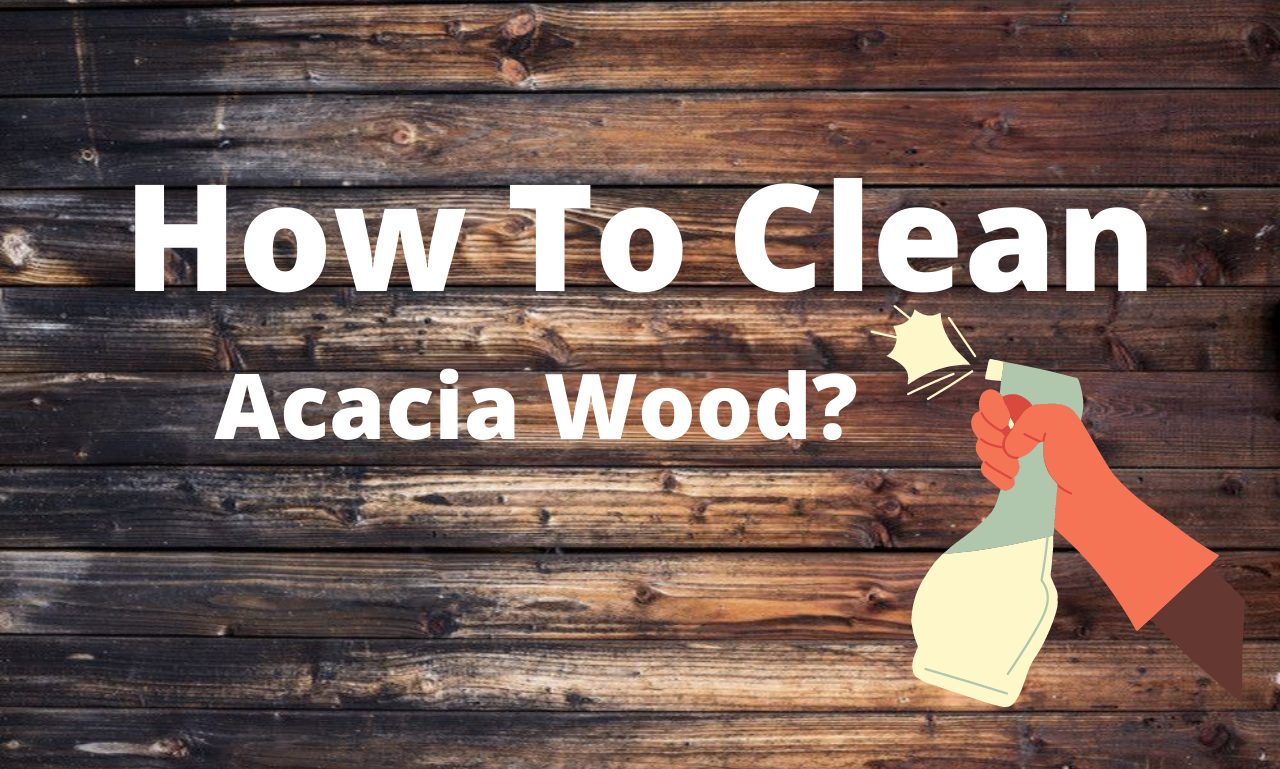
Credit: woodtours.com
What is the Best Oil for Acacia Wood?
When it comes to taking care of acacia wood, choosing the right oil is essential. Acacia wood is an incredibly durable and attractive material that can be used for a variety of projects around the home. In order to maintain its beauty and strength, it is important to properly protect it with quality oil.
The best oils for acacia wood are those that penetrate deeply into the grain while providing superior protection against moisture, UV rays, scratches, and other damage. Tung oil has long been considered one of the best oils available for treating acacia wood. It penetrates deeply into the grain, helping to preserve its natural color while protecting against water damage and fading from sun exposure.
Linseed oil is another great option as it adds a beautiful sheen without making your surface too slippery or glossy looking. Both tung and linseed oils are safe enough to use inside or outside on all types of acacia woods regardless if they’re unfinished or pre-treated in some way such as staining or varnishing them first before applying any type of protective coating like these oils offer you In addition to being highly effective at preserving your finished products made from this type of hardwood species available out there today, both tung and linseed oils also have non-toxic properties which make them ideal choices when working with food items like cutting boards since they won’t leach any chemicals into whatever food item you may be prepared on top of them after application either!
To apply either tung or linseed oil onto your project made out of this gorgeous hardwood species simply dampen your rag with warm soapy water then wipe off any excess dust particles before wiping down again but this time using just a clean dry cloth saturated in either one choice between these two options mentioned here – depending upon what look you want afterward (shiny finish vs matte). Finally once done let sit overnight before buffing lightly the next day morning until desired shine is achieved!
Can You Use Murphy’S Oil on Acacia Wood?
The answer to the question of whether you can use Murphy’s oil on acacia wood is a resounding yes. Acacia wood, like most other types of hardwood, responds well to treatment with Murphy’s Oil Soap. This product works by penetrating deep into the pores and grains of the wood, thereby protecting it from dirt and grime while also imparting a beautiful shine that highlights the inherent beauty of the natural grain pattern.
When applying Murphy’s Oil Soap to acacia wood, it’s important to take extra care in order not to damage or scratch its delicate surface. The best way is to start by making sure there are no dust particles on your furniture piece before you begin cleaning it; if there are any dust particles present, make sure they are removed with a soft cloth before moving forward with the application of Murphy’s Oil Soap. After this preparation work has been completed, mix up some lukewarm water and add two capfuls (approximately two tablespoons) of Murphy’s Oil Soap into it; then using a sponge or soft cloth apply this mixture onto your acacia piece in small circular motions until you cover all areas evenly.
Make sure not to leave any excess soap residue behind as this could cause discoloration or staining over time. Once finished simply wipe away any remaining solution with another clean damp cloth followed by an additional dry one for good measure – voila! You have just successfully applied protection to your beloved acacia item via Murphys Oil soap!
If done properly on a regular basis – approximately every 6-12 months – treating your furniture pieces with Murphys will help keep them looking new for much longer than expected; plus due to its gentle yet effective formula you don’t need to worry about leaving behind sticky residues or damaging surfaces like some harsher cleaners can do if used incorrectly. It should be noted that despite these benefits however Murphies do offer only moderate protection against food stains so always remember not to place hot items directly onto untreated surfaces without proper coasters/placemats being used underneath first!
All in all, though we believe that when used correctly and responsiblyMurphy’s oil soap remains one our favorite go-to products for everyday maintenance needs involving our precious wooden furniture items – including those made from acacia– so why not give it try yourself today?
Does Acacia Wood Flooring Scratch Easily?
When it comes to flooring, acacia wood is a popular choice for its beauty and durability. But one of the key questions people often have when considering this type of flooring is: does acacia wood scratch easily? The answer is no – with proper care and maintenance, acacia wood can remain in great condition for many years.
One of the main reasons why acacia wood doesn’t scratch easily is because it has a naturally high hardness rating on the Janka scale. This means that it’s more resistant to denting or scratching than other types of hardwood floors. However, there are some things you should keep in mind when caring for your acacia flooring to ensure it remains looks like new:
First, be sure to use furniture pads under any heavy furniture such as tables or chairs that will sit on top of your floor. Not only will this protect against scratches but also dents caused by weight shifting over time. Additionally, avoid dragging furniture across your floor since this can leave behind marks and gouges which cannot be repaired without refinishing the entire surface.
Second, place entry mats at doorways leading into rooms with an acacia wood floor so dirt and debris can be trapped before entering – otherwise small particles may act like sandpaper on your beautiful hardwood surface! Similarly, if you need to move heavier items around such as couches or armchairs consider using felt slides instead of lifting them directly onto the wooden boards which could cause scratches from contact friction between surfaces over time. Finally, regularly sweep or vacuum your floors (using a soft brush attachment) and mop occasionally with warm water mixed with a mild soap-free cleaning solution designed specifically for hardwood floors; this will help remove dust & dirt buildup which could contribute towards wear & tear damage down the track.
Avoid using too much liquid though as moisture can seep through seams between planks causing warping or buckling issues! Overall although some care needs to be taken when maintaining an acacia wood floor; properly looked after they won’t scratch easily thanks to their natural hardness rating on the Janka scale – making them an ideal choice if you want something both stylish yet durable enough to stand up against everyday wear & tear!
Does Acacia Wood Get Water Stains?
When it comes to outdoor furniture, acacia wood is a popular choice due to its durability and attractive grain pattern. But does acacia wood get water stains? The answer is yes — but with a few precautions, you can keep your acacia furniture looking like new for years.
Acacia wood is naturally resistant to water damage and rot, but it’s not completely waterproof. If the surface of the wood becomes saturated with moisture from rain or spills, it can cause dark staining that won’t go away without treatment. Additionally, if the wood isn’t sealed properly during manufacturing or refinishing processes, moisture can penetrate deeper into the material and cause warping or cracking over time.
To prevent water damage on your acacia furniture, it’s important to regularly clean up any spills as soon as possible and make sure that everything stays dry by wiping off condensation from beverages and using coasters when necessary. You should also periodically inspect all seams where two pieces of wood meet for signs of moisture seeping in between them. Finally, applying an appropriate sealant every couple of years will help protect your wooden surfaces against wear and tear caused by exposure to weather elements such as sunrays and humidity levels in different climates across the world.
By following these steps you can ensure that you’re able to enjoy beautiful acacia furnishings for many years without having to worry about unsightly water stains ruining their appearance!
Cleaning acacia wood floors is easy and straightforward. To start, use a mop or broom to remove any dirt from the floor. If there are marks on the floor, you can use a combination of dish soap and warm water to make an effective cleaning solution.
Apply it with a cloth or soft-bristled brush and let it sit for a few minutes before scrubbing in circles. When finished, use clean water to rinse away all traces of soapy residue. Finally, dry the area with absorbent towels or rags until completely dry.
With proper care and maintenance, your acacia wood floors will last for many years to come!
